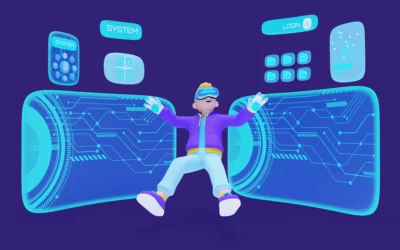Introduction:
In the ever-evolving seascape of software development, navigating the waters of efficiency and consistency can be a daunting task. Developers often grapple with the variability of environments, configuration files, and dependencies across different machines, leading to compile-time, runtime, and code-breaking issues. Enter Docker, a beacon of light in the storm, offering a solution to these challenges. In this blog post, we embark on a journey into the world of Docker, uncovering its key concepts, highlighting benefits, and showcasing practical applications that can transform the way we build and deploy applications.
Key Concepts of Docker:
What is Docker?
Docker, born from the pivot of DotCloud’s technology, stands as an open-source virtualization technology that creates a unified and isolated environment across host machines. Initially a platform-as-a-service (PaaS) offering software hosting, Docker has become a powerful tool for developers seeking consistency and reliability in their development and deployment workflows.
What is a Container?
A container is a self-contained, isolated sandbox environment running on host machines. It encapsulates applications and their dependencies, ensuring a consistent runtime environment. The beauty of containers lies in their portability and ability to maintain uniformity across diverse environments.
What is Image?
An image is a configuration template that serves as the blueprint for creating containers. It defines the specifications required to configure a fully operational container environment, encompassing dependencies, settings, and code. Docker images consist of layers, with the foundational layer on top called the parent image.
What is Dockerfile?
The Dockerfile acts as the maestro orchestrating the creation of Docker images. It comprises a set of instructions and commands executed by the Docker Engine to build an image, set up the environment, and add configurations, ensuring the reproducibility and consistency of the resulting image.
What is Docker Hub?
Docker Hub, often dubbed the GitHub of Docker images, is the official cloud-based registry for Docker. It hosts a vast repository of container images contributed by the community, software companies, and open-source projects. It serves as a centralized hub for sharing and distributing Docker images.
Why Use Docker Containers: Key Benefits
Cost-saving:
Docker containers prove economical by consuming less memory compared to virtual machines, translating into reduced IT infrastructure costs.
Flexible resource sharing:
Containers allow for flexible resource sharing, with applications running on the same operating system while remaining isolated from one another, contributing to resource efficiency.
Multi-Cloud Platforms:
Docker enjoys widespread support across major cloud service providers, facilitating seamless deployment and migration between environments.
Configuration and Consistent Delivery:
Docker streamlines the development, shipping, and running of applications, offering a standardized and efficient approach. Applications can be distributed across platforms without compatibility concerns.
Pipelines:
Docker promotes standardized development and release cycles, aligning with Continuous Integration and Continuous Delivery (CI/CD) practices. This fosters agility and scalability in application development.
Practical Applications of Docker:
Microservices Architecture:
Docker’s containerization is well-suited for building microservices-based applications. Each service operates within its container, simplifying development, deployment, and scaling.
Continuous Integration/Continuous Deployment (CI/CD):
Docker plays a pivotal role in CI/CD pipelines, providing a consistent testing and deployment environment, and accelerating software development lifecycles.
DevOps Practices:
Docker facilitates collaboration between development and operations teams, nurturing the adoption of DevOps practices. This accelerates development, enhances collaboration, and ensures smoother operations.
Conclusion:
As we navigate the seas of software development, Docker emerges as a reliable compass, guiding us through challenges with its portability, efficiency, and scalability. Armed with the knowledge of Docker’s key concepts and practical applications, developers can set sail with confidence, knowing they have a powerful tool to weather the complexities of modern software engineering. May your Docker journey be smooth, and your applications sail with agility and resilience!





